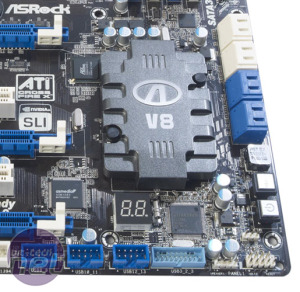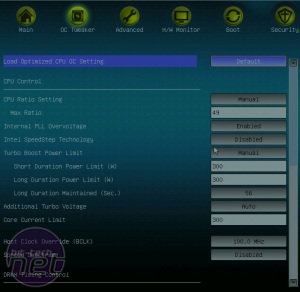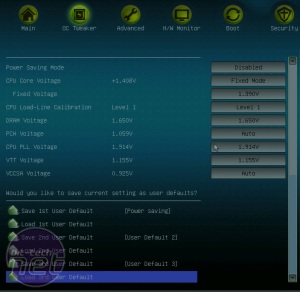
Performance Analysis
At stock speeds, the P67 Extreme4 scored 1,890 overall in our Media Benchmarks. This is the slowest stock-speed score we’ve seen from a B3-revision P67 board, but the difference is also tiny. There was a gap of only 46 points between the P67 Extreme4 and the quickest motherboard at stock speeds, which is a margin of only 2 per cent.One concern, however, was how hot the chipset heatsink became when the motherboard was under load for extended periods of time. The heatsink may be large, but it’s got a relatively small surface area compared to most of the P67 chipset heatsinks we’ve seen, as it’s just a simple slab of metal. We didn’t encounter any stability issues, but you'll want to make sure your case’s air-cooling is up to scratch.
SATA speeds were an interesting area for the P67 Extreme4, as they weren't as bad as our graphs imply. We can say this because we’ve got lots of B3 P67 boards going through our labs at the moment (reviews to come soon), and as a result know that Asus boards are consistently ahead of the field when it comes to SATA speeds. As such, you shouldn't read too much into the fact that the P67 Extreme4 was behind the Asus boards in this test. Gaming performance proved to be roughly average for the P67 Extreme4, though; it didn’t attain the heady heights of the Asus Sabertooth P67, but it performed on par with the similarly priced Asus P8P67.
Overclocking proved to be slightly more challenging than we’d anticipated. This was partly down to familiarity – this was our first time with an ASRock EFI – but the board had some idiosyncrasies too.
When we tried our first overclock, for example, we were bemused to see the clock speed jumping all over the place in Windows. A little investigation found that this was because we’d left the Turbo Boost power limit (the maximum Wattage that the CPU can draw when Turbo Boosting) settings in the EFI at their default options.
In our experience, these settings are usually overridden when you change the core voltage options, but this wasn’t the case with the P67 Extreme4. Still, it was easy to fix, and simply required us to raise the short and long duration power limits to 300W, and also increase the core current limit to 300W. The 300W value we used was merely an arbitrarily high value.
After this tweak, we were able to run our test chip at 4.9GHz, which is a little way behind the Asus P8P67 but on a par with the Asus Sabertooth P67. The P67 Extreme4 was slightly less streamlined than some other motherboards on test when it came to recovering from failed overclocks, though, and often needed resetting manually; otherwise, it was a straightforward and painless experience.
The P67 Extreme4 scored a reasonable 2,665 in our Media Benchmarks when overclocked, which was fractionally quicker than the Sabertooth P67 but behind the Asus P8P67. It also saw a good performance boost in games – its minimum frame rate of 78fps in Arma II was a healthy 5 fps faster than when at stock speeds, but was still behind the two Asus boards.
Again, though, in the grand scheme this result wasn’t bad at all, it’s just that the two P67 boards to which we’re comparing the P67 Extreme4 - the Sabertooth P67 and the P8P67 - excel at gaming. We’ve got many more P67 boards in the labs at the moment, which we plan to publish reviews of soon, and this will provide a clearer picture of the P67 market.
Conclusion
The P67 Extreme4 may not be the quickest P67 motherboard we’ve seen, but it’s within just a few per cent of the frontrunners' performance. Add to this its long list of useful features and extras, and you have a solid motherboard that would make a sound base for an LGA1155 PC.There are some areas for concern, though, such as the warm-running chipset and the EFI idiosyncrasies, which mean that the board falls just short of winning an award. If you’re in the market for a P67 motherboard then we'd still currently recommend the B3 revision version of the Asus P8P67. However, with all the B3 boards we've got in the labs, it's definitely going to be worth checking back over the coming weeks to see how the contenders from other large manufacturers fare.
-
Value18 / 25
-
Features26 / 30
-
Speed40 / 45


MSI MPG Velox 100R Chassis Review
October 14 2021 | 15:04













Want to comment? Please log in.